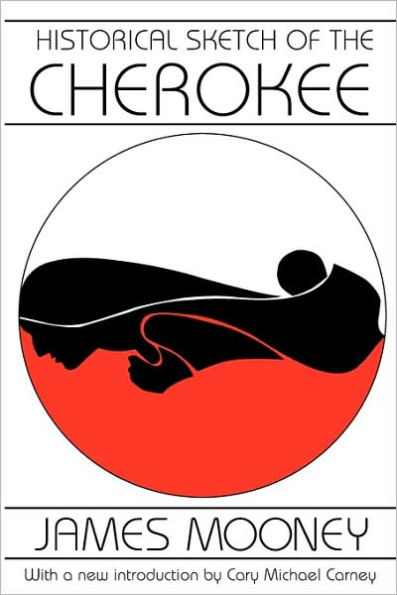Historical Sketch of the Cherokee
When James Mooney lived with and studied the Cherokee between 1887 and 1900, they were the largest and most important Indian tribe in the United States. His dispassionate account of their history from the time of their first contact with whites until the end of the nineteenth century is more than a sequence of battles won and lost, treaties signed and broken, towns destroyed and people massacred. There is humanity along with inhumanity in the relations between the Cherokee and other groups, Indian and non-Indian; there is fortitude and persistence balanced with disillusionment and frustration. In these respects, the history of the Cherokee epitomizes the experience of most Native Americans. The Cherokee Nation ceased to exist as a political entity seven years after the initial study was done, when Oklahoma became a state.In the introduction to the original publication of this history in 1900, James Mooney commented that "there is change indeed in dress and outward seeming, but the heart of the Indian is still his own." This history was originally included in the 19th Annual Report of the Bureau of American Ethnology.It was republished under the auspices of the National Anthropological Archives of the Smithsonian Museum of Natural History, at the request of the Governing Body of the Cherokee Nation, in 1975, with new introductory material and supplementary illustrations from the archives. The volume has a foreword from W.W. Keeler, chief of the Cherokee Nation, and an introduction by Richard Mack Bettis, president of the Tulsa Tsa-La-Gi-Ya Cherokee Community.
1126520405
Historical Sketch of the Cherokee
When James Mooney lived with and studied the Cherokee between 1887 and 1900, they were the largest and most important Indian tribe in the United States. His dispassionate account of their history from the time of their first contact with whites until the end of the nineteenth century is more than a sequence of battles won and lost, treaties signed and broken, towns destroyed and people massacred. There is humanity along with inhumanity in the relations between the Cherokee and other groups, Indian and non-Indian; there is fortitude and persistence balanced with disillusionment and frustration. In these respects, the history of the Cherokee epitomizes the experience of most Native Americans. The Cherokee Nation ceased to exist as a political entity seven years after the initial study was done, when Oklahoma became a state.In the introduction to the original publication of this history in 1900, James Mooney commented that "there is change indeed in dress and outward seeming, but the heart of the Indian is still his own." This history was originally included in the 19th Annual Report of the Bureau of American Ethnology.It was republished under the auspices of the National Anthropological Archives of the Smithsonian Museum of Natural History, at the request of the Governing Body of the Cherokee Nation, in 1975, with new introductory material and supplementary illustrations from the archives. The volume has a foreword from W.W. Keeler, chief of the Cherokee Nation, and an introduction by Richard Mack Bettis, president of the Tulsa Tsa-La-Gi-Ya Cherokee Community.
62.99
In Stock
5
1

Historical Sketch of the Cherokee
288
Historical Sketch of the Cherokee
288Paperback(New Edition)
$62.99
62.99
In Stock

Product Details
| ISBN-13: | 9780202308173 |
|---|---|
| Publisher: | Transaction Publishers |
| Publication date: | 09/30/2005 |
| Edition description: | New Edition |
| Pages: | 288 |
| Product dimensions: | 6.00(w) x 9.00(h) x (d) |
About the Author
From the B&N Reads Blog
